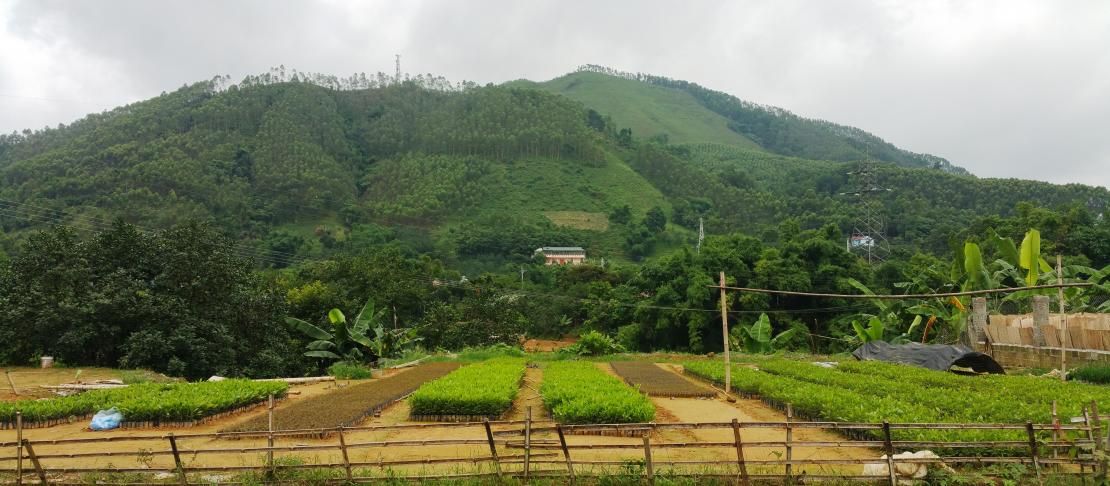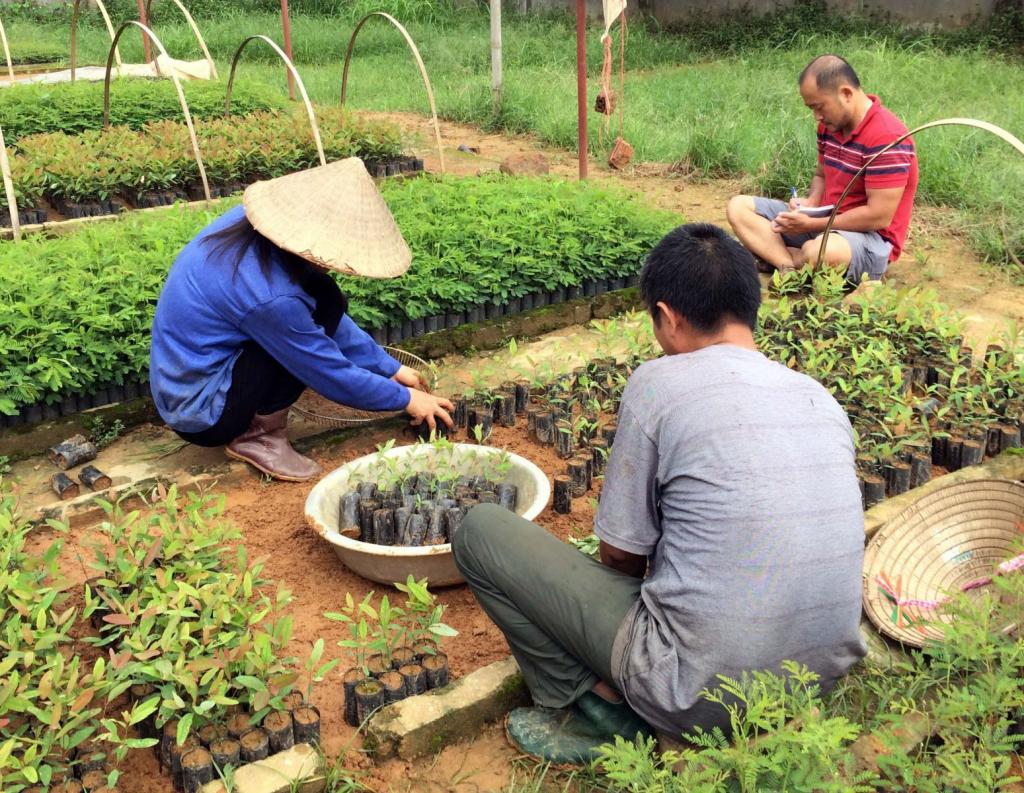Participatory land-use planning in Ma Village spurs better farming decisions

A participatory land-use plan is an inclusive, bottom-up approach to pragmatic resource planning and identification of best-fit practices in consideration of local resources, culture and conditions.
Ma Village, a small community with great agricultural potential, lies in the commune of Vinh Kien, Yen Bai province in Vietnam. It is home to 729 people, of which about 80% depend on agriculture for a living. Despite its potential, the sustainability and profitability of agricultural production of the village remain inadequate as the climate-risk area continues to suffer from the depletion of natural resources, land degradation, and water pollution.
Ma Village is one of the six Climate-Smart Villages (CSV) in Southeast Asia. CSVs are communities that are prone to climate change impacts. Hence, these are sites where the CGIAR Research Program on Climate Change, Agriculture and Food Security (CCAFS) has been introducing climate-smart agriculture (CSA) practices in an effort to enhance the villages' food security and capacities to adapt to and mitigate climate change.
CCAFS SEA, in partnership with the International Centre for Tropical Agriculture (CIAT), and Northern Mountainous Agriculture and Forestry Research Science Institute of Vietnam (NOMAFSI), spearheaded a Participatory Land-Use Planning for Climate Change Adaptation Strategies (PLUP-CC) in Ma Village. In the activity, local farmers shared some indigenous farming knowledge in the development of a village-level land-use planning map that would help improve the farming decisions of farmers.
Mr. Do Trong Hieu, a NOMAFSI researcher, expressed interest in the PLUP process and recognized its importance in formulating village plans and CSA activities that will benefit local people.
The different factors for farming decisions such as soil condition, irrigation and drainage situation, and climate change vulnerability of farming fields were discussed and taken into consideration by villagers to come up with better land-use options.
Based on the discussions, the crops cultivated in the lowland area displayed high vulnerability to extreme climatic conditions such as drought, cold spells, and floods. On the other hand, crops on the upland areas primarily suffer from the impacts of severe soil erosion due to intense rainfalls and typhoons.

Acacia farming is one of the major livelihood sources among people in Ma Village. Here, they do sampling of acacia seedlings. Photo: CIAT
Ma Village has a total land area of 350 ha where about 63% of farmlands are allotted to eucalyptus and acacia. Other agricultural activities of the village include cultivation of rice, maize, and cassava, animal husbandry, and fishing. About 16 hectares of land comprise the main food crop of the village—rice. However, its cultivation depends on the availability of water which has been observed to have significantly declined in volume over the years as a repercussion of drought.
The Cao Bien stream is an alternative water source; however, due to improper use of pesticides and poor waste management, it has become severely polluted and provides insufficient water supply to the community. During spring, periodical water shortages due to forest denudation compromise the supply of irrigation water, which largely affects agricultural production in paddy fields such as Cay Si, Sap Nhim, and Cay Cheo.
Mr. Le Van Tam, the village head, said: “Recovering natural forest and growing more trees within resident land is an option to solve water shortage, soil erosion, and many other unfavored weather events.”
The land-use planning activity concluded with the farmers’ decision to replace the cultivation of rice crops with drought-tolerant cash crops during the spring season and support reforestation in the upland area of the village. In residential areas, farmers agreed to replace mixed gardens with fruit trees such as pomelo, lemon, and banana.
As opposed to previous land-use strategies that used the top-down approach, the establishment of a detailed land-use plan specifically devised for Ma Village would help local authorities and other organizations to determine the particular needs of the village and identify the appropriate agricultural interventions and practices needed to ensure the transition of Ma Village into a CSV.
Read more
Bui Tan Yen is a postdoctoral fellow and science officer for CCAFS Southeast Asia. Meira Andutan was an intern at the International Rice Research Institute.



